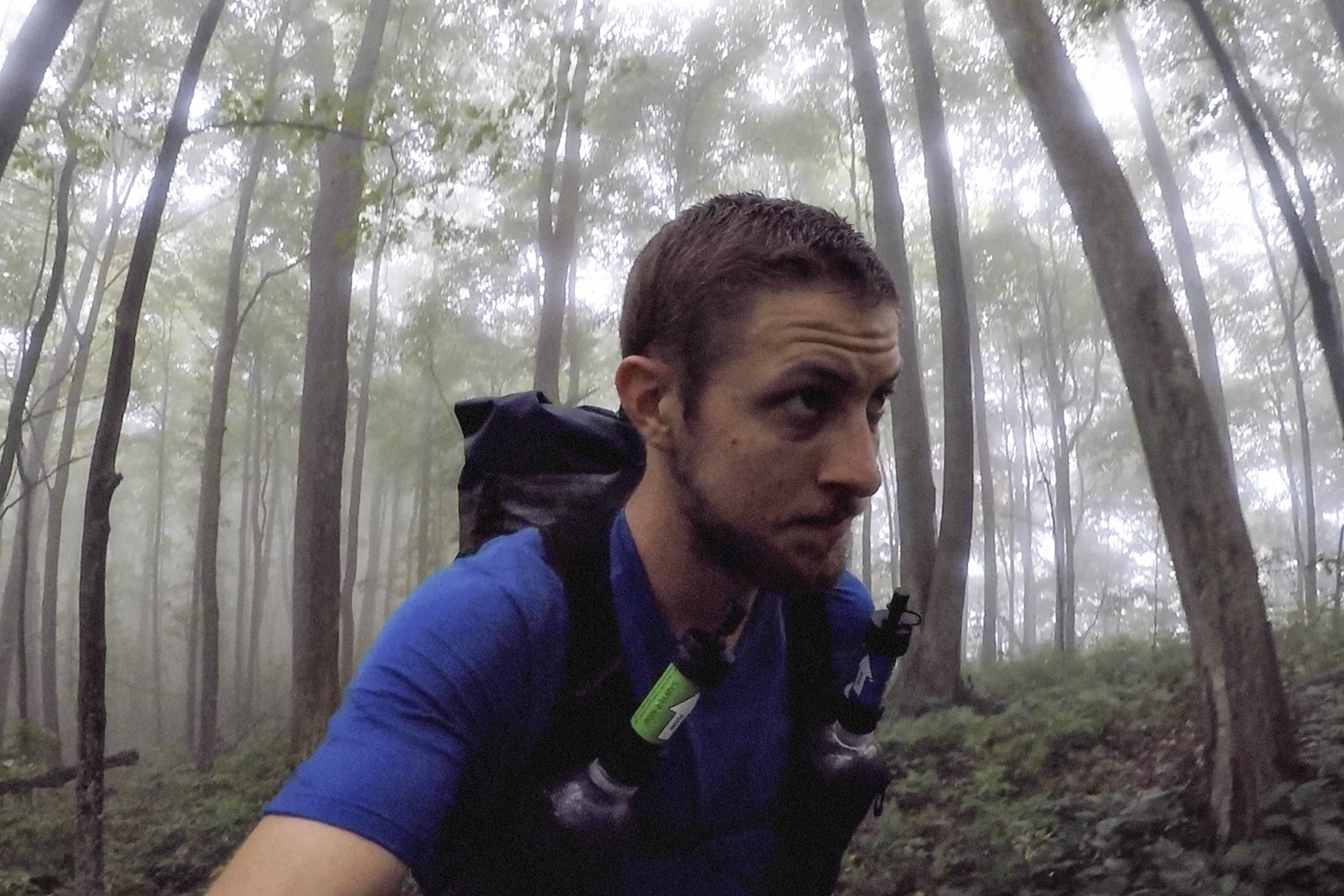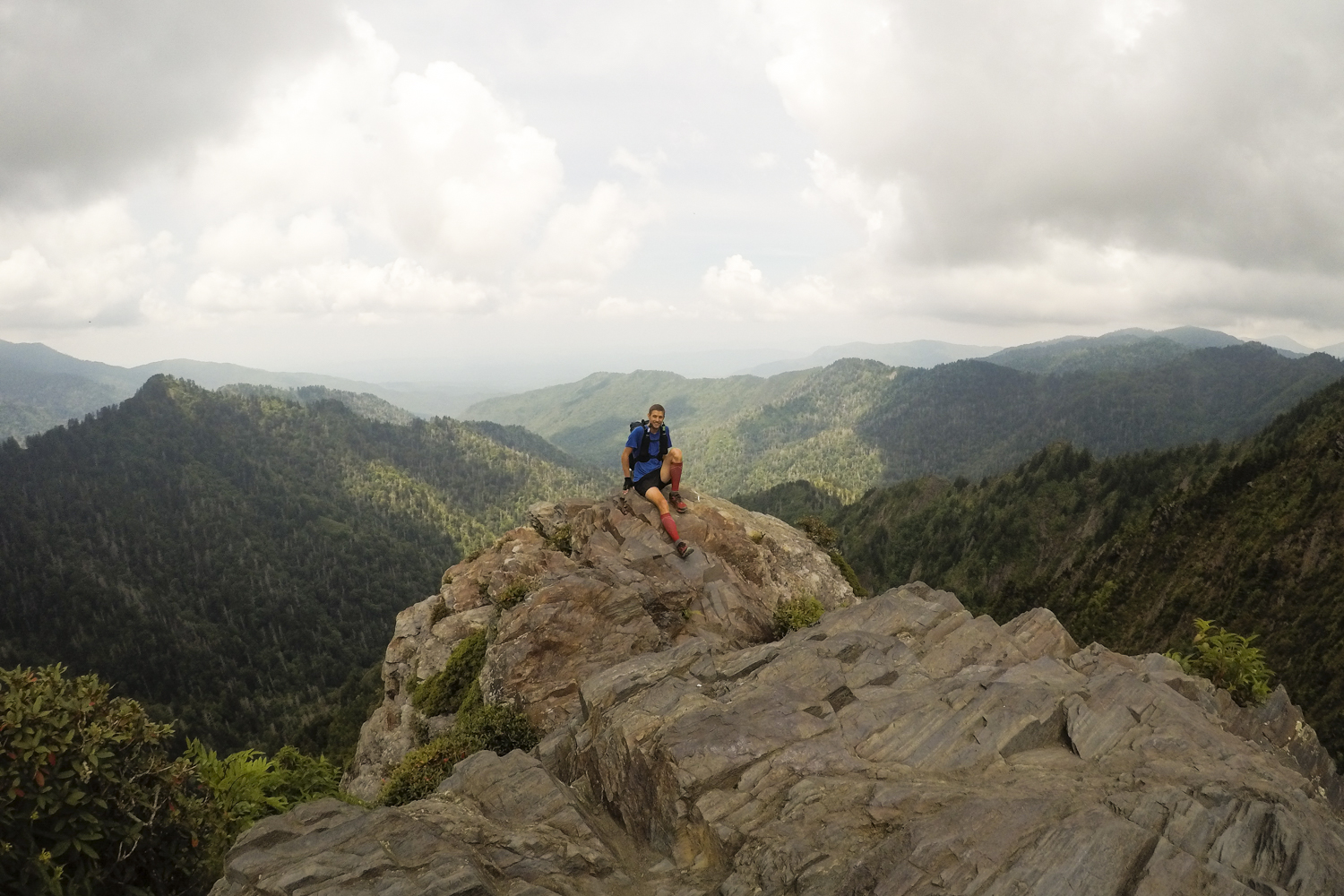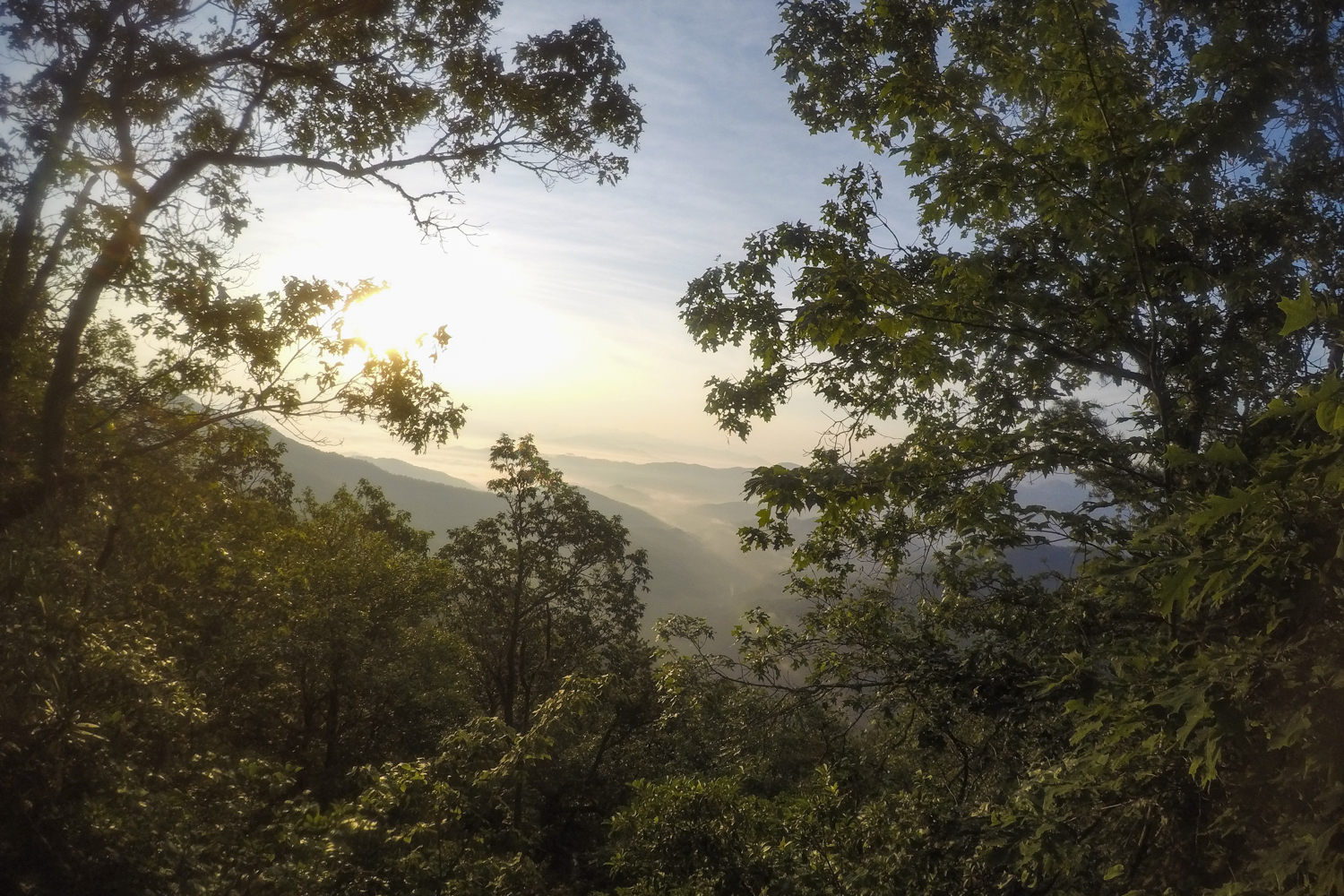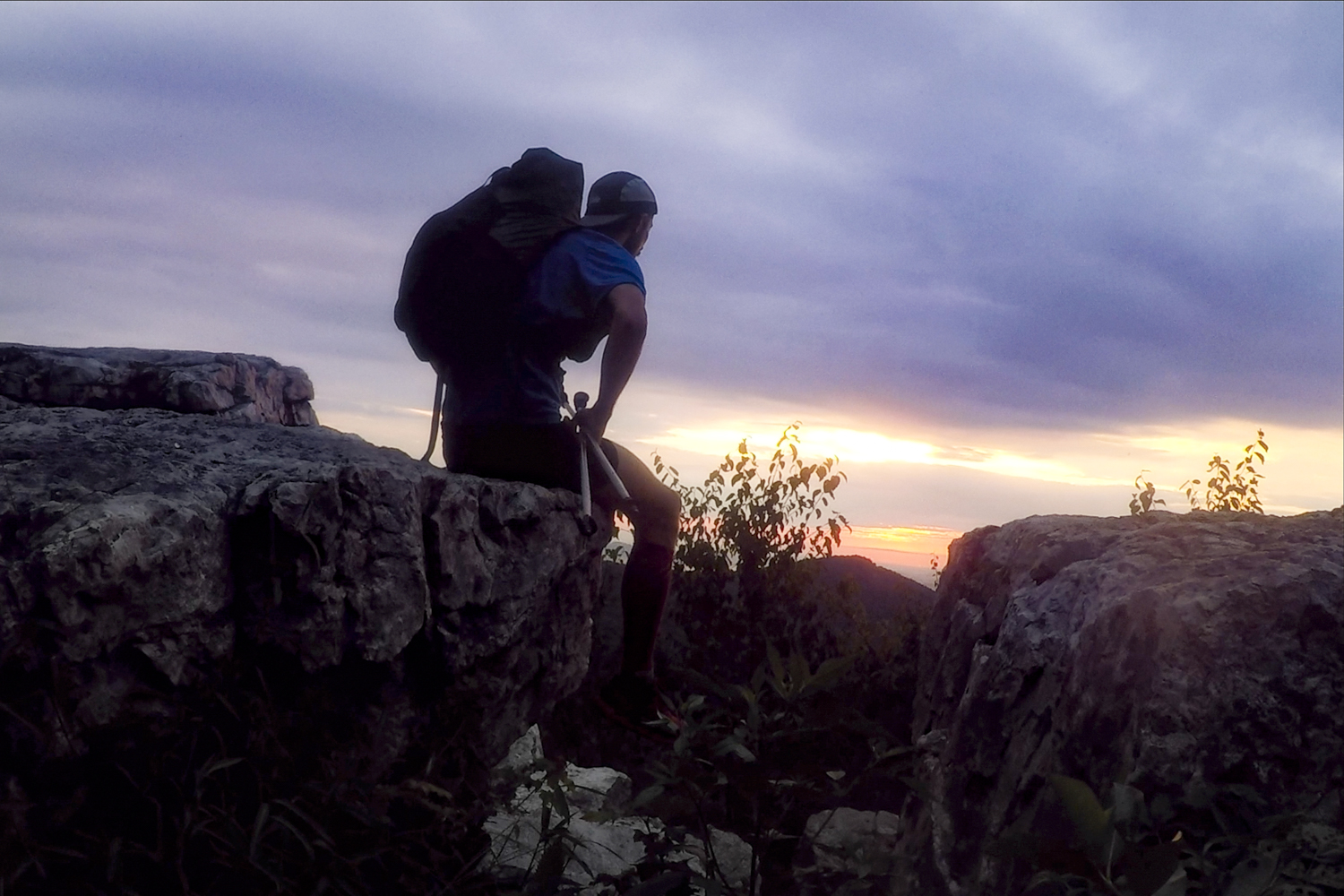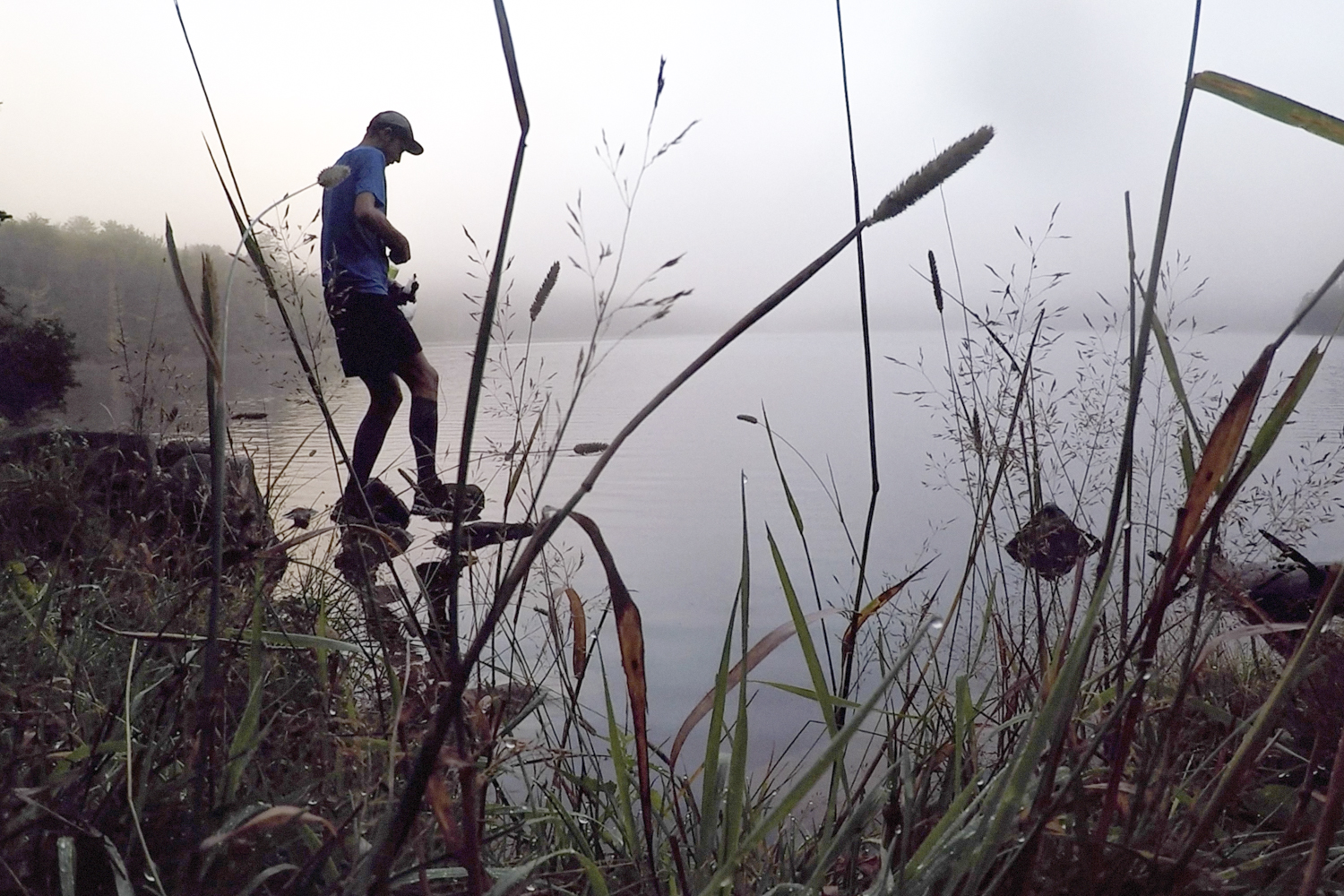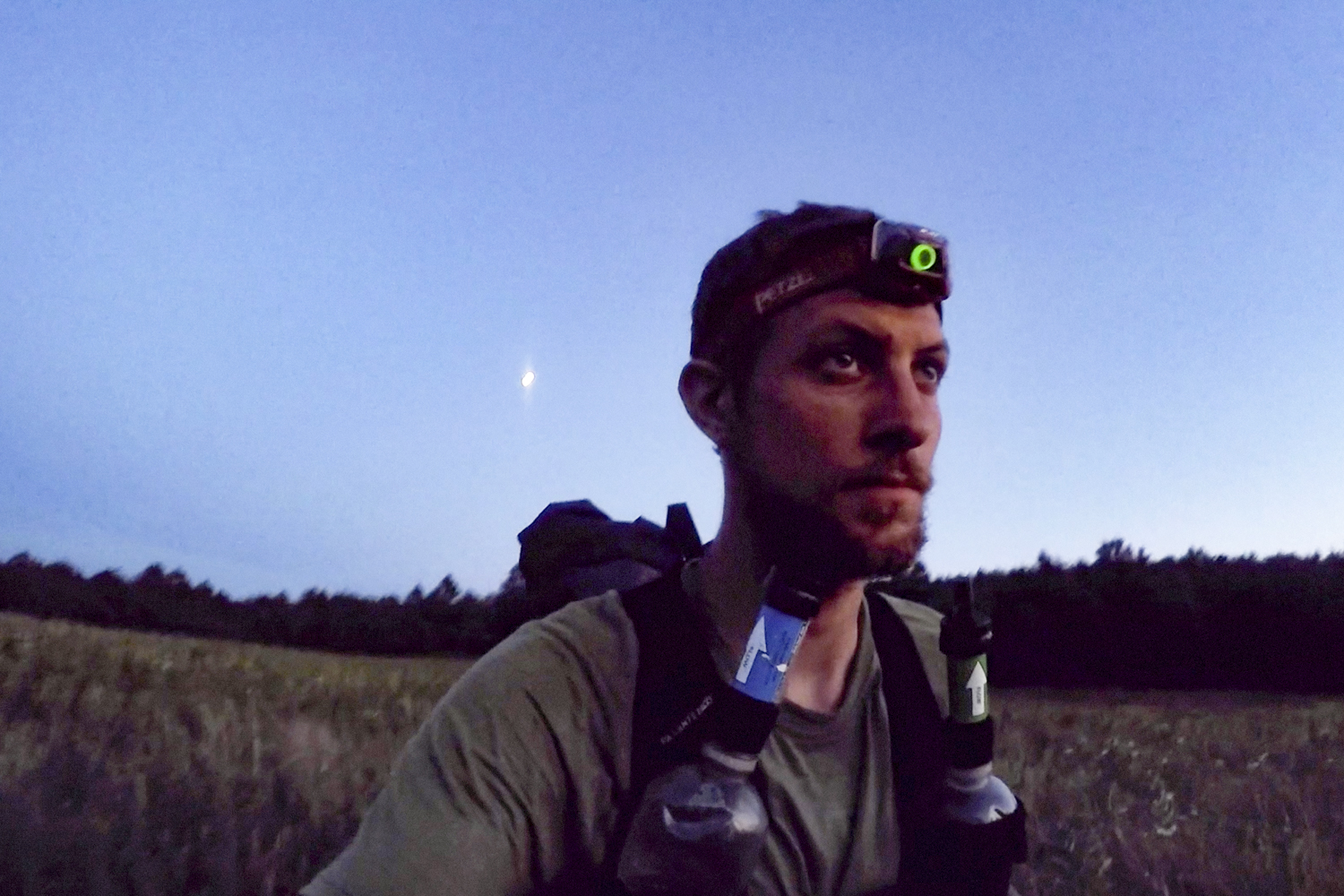The Appalachian Trail — AT to those in the hiking community — is approximately 2,200 miles long, running from Mount Katahdin in Maine to Springer Mountain in Georgia. Most thru-hikers who complete the whole trail do so in about a half year. When Joe McConaughy, aka Stringbean, set the fastest known time for a self-supported trek in September 2017, he did so in 45 days, 12 hours, and 15 minutes. That’s four times faster than the average hiker, a feat he pulled off by covering up to 50 miles a day and carrying a pack that weighed just seven pounds, not counting his water and food, the latter of which added up to about 8,000 calories daily.

If you don’t have 45.5 days to charge down the AT, instead spend 14 minutes watching the short documentary Stringbean, which was produced by Pilot Field using footage Joe captured himself during his epic run.
For more background on his record-setting achievement, I spent a few minutes talking to Joe about his training, his trials on the trail, and his ultimate triumph.
The Manual: What got you into ultrarunning?
Joe McConaughy: I first got into ultrarunning after finishing a college track career at Boston College. I had a big vision to go out and set the supported record on the Pacific Crest Trail (PCT) after finishing college. About a month and a half after graduating and running my last mile on the track, I was on the southern border of the United States preparing to run to Canada. While I had a decent amount of confidence, I really went in with no experience. I had never run ultra-marathon distances, never competed in a race above a 10k, my longest run up until a few months before the trail was in the mid-teens … but it all worked out and I set the supported record on the PCT!
TM: When did you first get the idea to go for the fastest known time on the Appalachian Trail and what gave you the idea?
JM: I was inspired to do a self-supported attempt after learning about the differences of supported vs. self-supported and following Heather Anderson on some pretty epic hikes. She set both the self-supported AT and PCT records. Seeing her be able to achieve such amazing things made me realize that it was possible to do something like that on the AT. I had it on my mind for a few years prior to attempting the trail in 2017, but I really started going for it eight months out when I got confirmation from my work that I could get time off.

TM: How did you prepare?
JM: Working a full job, I spent every extra minute in planning or training. Katie Kiracofe, my fiancé (June 8 wedding!) was instrumental in helping with excel spreadsheets, food boxes, measuring out all my food by calorie, finding resupply towns, securing the most lightweight gear. A fun party trick we both have: I can tell you the calorie to pound ratio of many snack items. Almonds? 2600 calories per pound. Fritos? 25oo.
As far as training goes, I did all my runs with a backpack and weight. I would typically run twice per day, sometimes three. My mileage wasn’t actually that crazy; I was running between 60-120 miles per week for the months leading up the AT. My goal was to start the AT without being extra fit. I wanted some fat stores that I could use as reserves when I didn’t get as many calories as I needed per day. You can tell I needed those fat stores because by the end of the documentary I visually look like garbage.

TM: What did you bring with you on the trail? How did you get resupplied?
JM: Everything I brought was ultralight. A hiker’s base weight is the weight of everything they are carrying minus food and water. My base weight was just under 7 pounds. I had a backpack, a bivy, a sleeping quilt, two plastic water bottles with Sawyer minis attached, an electronics kit with cables (my GoPro, phone, satellite tracker, headlamp, extra batteries), one windbreaker jacket and pants, a poncho tarp (for poncho and to protect my bivy from rain), trekking poles, a pocket knife, AT maps, Vasoline, and lots and lots of food.
A self-supported attempt means operating without a team helping you carry any of your gear or rations, though you may stop to buy food and supplies or to reclaim supplies you stashed ahead of time. Unsupported means you carry everything you will use from day one, save for water found in nature. Supported means you have a dedicated team helping with resupply and gear portage.
I had 13 logistical resupply stops where I would pick up a package from a business or the postal service. My fiancé and I packed each box to contain between 15,000 and 26,000 worth of calories. I would have to get off-trail to go into those establishments and pick them up, while also charging my electronics (GoPro, phone, external battery), buying additional items from stores and repacking my backpack. I would have to go up to 1.5 miles off trail to go to the resupplies, although most were in very close proximity to the trail, and sometimes on it. Another logistical issue was waiting for the establishments to open. At the Bear Den Hostel in Virginia, for example, I had to wait a few hours because they weren’t open when I arrived at 11 a.m.
TM: What was the biggest surprise?
JM: The biggest surprise I experienced was in all of the love and support I received from friends, family, and total strangers.
The best part of it all was that I was self-supported, meaning I had the solidarity to reflect on all these amazing people and experiences. I feel a lot of love and connection with the world, and that was my greatest surprise of the trail.
While it doesn’t always feel this way in the media, people want to believe in you and they want you to succeed. They want to share in your successes and failures … Although self-supported, I had countless people in my corner. My fiancé went through hell and back in the planning stages and when I was on the trail. Due to the self-supported nature of it all, she wasn’t allowed to come visit me. Friends and family … helped with training runs and emotional support. My parents came to both the start and finishes of the trail. Education First, the company where I still work, was kind enough to give me a temporary leave of absence. Companies like Heartbreak Hill, Brooks, Mountain Laurel Design, Palan’te packs, and Ciele were happy to provide free products and promote me. I met so many thru-hikers who were excited to talk about our shared experiences.
The best part of it all was that I was self-supported, meaning I had the solidarity to reflect on all these amazing people and experiences. I feel a lot of love and connection with the world, and that was my greatest surprise of the trail.
TM: What was the greatest challenge?
JM: The greatest challenge of the trail was watching my lead slip through my fingers. It is really easy to be optimistic and to enjoy yourself when you are set to smash a world record. The long nights, the injuries, the lack of creature comforts are nothing to complain about. But once shit hit the fan, I started doubting myself mentally and beating myself into the ground. It started with a micro-tear in my right quad at the start of the White Mountains, the notoriously hardest part of the AT. My knee swelled up, but I hobbled on, running as much as I could. This changed my form, damaging my hamstring tendon and my calf muscle. I started to lack power and flexibility down my whole right leg … The changed gait started to affect my left hamstring, and it felt like my body was shutting down. I had been averaging 50 miles, and all the sudden I was averaging 30. I was pissed off that I wasn’t covering the ground I had wanted to but had built up such a lead that I could remain calm.
That was until I ran the wrong way off of a top of a mountain. I didn’t turn right at the top of South Twin mountain in the Whites and ran 3,000 feet downhill before I realized my mistake. This added insult to injury and I was furious. I think this was the only time on the trail I had rage tears because I was so frustrated with myself.
The next town resupply said that my box never showed up. I spent two hours frantically calling people only to find that they had mislabeled my box. I saw my day-and-a-half lead evaporate in front of my eyes. I was still injured and everything was going wrong.
The trail threw challenges at me every day. The run felt like a constant battle with myself and Mother Earth. At the same time, it also felt peaceful. Everything I did on the trail was purposeful and gratifying. I smile back fondly at even the hardest of times.
I had assumed Southern Maine would be easy. Southern Maine was not easy. I continued to do mid-30 miles, with less than a week to go, making me question whether I would get it. With only a few days left, I came upon the Kennebec River. You are required to take a ferry across it because the water is too deep to ford and I didn’t want to risk getting everything I owned wet. I had to wait another four hours of daylight for the ferry to open during their designated hours. Holy crap, what else could go wrong?
Luckily, I was able to put on a mad dash at the end, which encompasses the 110-mile push without sleep.
The trail threw challenges at me every day. The run felt like a constant battle with myself and Mother Earth. At the same time, it also felt peaceful. Everything I did on the trail was purposeful and gratifying. I smile back fondly at even the hardest of times.
TM: Did you meet any notable or interesting people along the way?
JM: I met a lot of interesting people! Day hikers, thru-hikers, trail angels, another guy going after the record in the opposite way… one thru-hiker I met was named Slomo. Friendly guy with a classic, scraggly thru-hiker beard. It was miserably wet in Virginia and we were both on our way to Partnership Shelter. We were maybe 15 miles out from the shelter, both soaking wet when I passed him on the trail.
“You know what time the pizza place delivery closes? You can call in the delivery from Partnership, right?’ I asked Slomo. This shelter is notorious because it is the only place you can order a delivery pizza to the middle of nowhere.

“Not sure, he says, but I’m really hoping I can make it tonight.”
By the pace he was going, I could tell he wasn’t going to make it. So I wished him good luck, made it to the shelter in time, and ordered two large pizzas. Sure enough, a guy showed up at the trailhead next to the visitors center a quarter of a mile away with two topping-loaded pizzas. I ate one and a half pizzas and threw away the last half into a conveniently placed dumpster because I couldn’t eat anymore. I was getting ready to go to bed when Slomo showed up. He was soaking wet, but then incredibly disappointed when I told him you couldn’t order pizza — it was too late. But once he found out that there was a half of a pizza in a dumpster, his eyes lit up and he happily found and then devoured the pizza that I had failed to eat.
TM: Were there any injuries, moments of danger, bad storms, or events that set you back?
JM: The Appalachian Trail is a constant grind. They call it the green tunnel for a reason. Much of the terrain is characterized by steep, rocky climbs and the occasional view. In Vermont, I ran into constant mud up to my knees and ankles. In Pennsylvania, you cannot walk in a straight line because the ground is littered with protruding rocks. In New Hampshire, you face temperamental Mount Washington and constant boulder fields. In the south, you are challenged by high heat and humidity. I was running with some kind of injury almost every day. In addition to a long running background and good health, you need to have incredible mental toughness. I suffered many injuries on the trail — too many to count. The most frightening was an open infection on the bottom of my foot that I received in Pennsylvania. A fellow hiker lent me some antibiotic creme a few days after I noticed it, but I hiked the remaining two weeks with an open sore. Also, I had four instances of micro-tears in my lower quad muscles. This would cause me to walk/hobble for a day and a half as the muscle repaired and the swelling went down.
TM: At what point did you know you were going to set a record?
JM: I knew I was going to set the record going into my last push on the trail. I felt pretty good about beating the [Kurt Meltzer record, the previous record holder] … but really rough terrain and multiple injuries put me pretty far behind schedule. Upon entering the 100-mile wilderness with about 48 hours and 110 miles to go, I knew I just had to keep in my groove and it would all work out. I had solid running during the day, but pushed hard through the night and had covered 72 of the 110 miles with about 24 hours left. I was elated but pretty beat up. I managed to finish the last 110 in 36 hours, but I was running on empty. I had ran out of food and hadn’t slept through the night.






